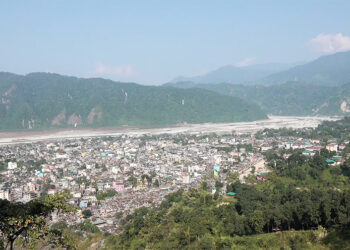 The government today announced an over Nu 138bn national budget for the 2025–2026 financial year, prioritising health and education. Unveiled by the finance minister in the National Assembly, this is the highest fiscal budget ever allocated. The surge in budget, over a 42 per cent increase from the last fiscal year, is attributed to a rise in interest payments, increased stipends and a surge in capital expenditure among others.
The government today announced an over Nu 138bn national budget for the 2025–2026 financial year, prioritising health and education. Unveiled by the finance minister in the National Assembly, this is the highest fiscal budget ever allocated. The surge in budget, over a 42 per cent increase from the last fiscal year, is attributed to a rise in interest payments, increased stipends and a surge in capital expenditure among others.
Social services such as education and health will once again receive the largest share of the 2025–26 national budget. It has been allocated over Nu 40bn, accounting for 30 per cent of the total budget. This is followed by economic and public services and national debt repayment.
The health sector will receive almost Nu 12.9bn to improve services and infrastructure across the country. Major investments include purchase of new CT scan and MRI machines at the national referral hospital, procurement of ambulances and mobile medical units and completion of the 65-bed Mother and Child Hospital in Monggar.
The allocation will also support the continuation of the Accelerating Maternal and Child Health Program, early diagnosis of communicable diseases in high-risk areas, and Bhutan’s efforts to achieve malaria-free certification.
Finance Minister Lekey Dorji said, “In 2017, the fertility rate was reported to have decreased to 1.7 per cent. In order to increase that, the government will start giving a monthly fee for every third child. Moreover, to encourage having more children, apart from the monthly fee, we have also included subsidising the income tax in the income tax bill.”
Mental health services will also see a boost, with Nu 71.9 M allocated to complete the 60-bed wellbeing hospital under The PEMA Secretariat. To address human resource gaps in the sector, Nu 80 M is allocated for clinical training and continuous medical education.
The education sector has been allocated almost Nu 28bn aimed at transforming Bhutan’s education system and building a 21st-century workforce. Key initiatives include the completion of 70 per cent of redevelopment works in 20 central schools, Phase II of the Recovery School in Kanglung, and to establishment of an international school.
To strengthen teaching quality, more than Nu 344 M will fund centralised professional development, including M.Ed. programmes at Paro and Samtse colleges of education.
Technical and vocational education is also a priority, with Nu 200 M allocated to upgrade four Technical Training Institutes, and more than Nu 222 M to enroll over 3,000 job-seeking youths in TTIs.
Of the total budget, 43.8 per cent is allocated for capital projects and 42.2 per cent for current spending. Similarly, 12 per cent is set aside for debt repayment, and 1.4 per cent for on-lending.
According to the updated Medium-Term Budget Framework, around 25 per cent of the total budget for the 13th Five-Year Plan will be spent during this fiscal year.
Samten Dolkar/Deki Lhazom
Edited by Kipchu








